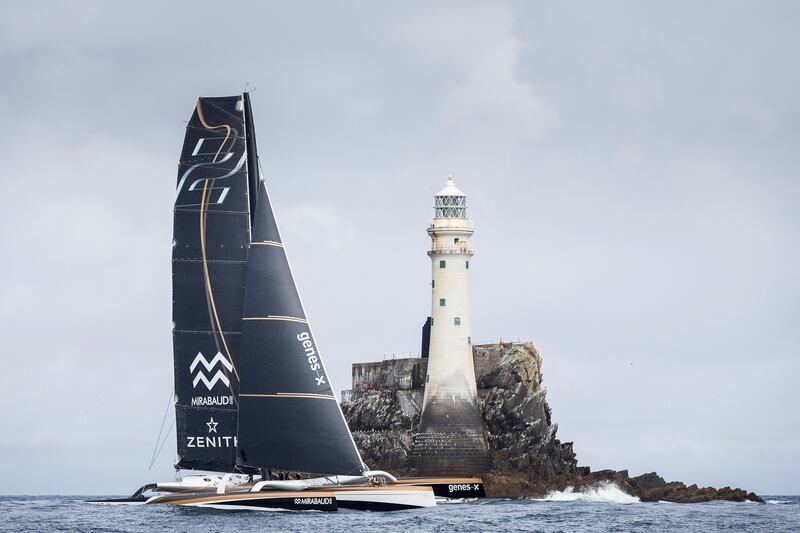A massive leap in entries has led to a new record turnout for the Rolex Fastnet Race that gets underway from Cowes in just over one week’s time.
Undeterred by changes to the classic offshore race’s traditional route that finished in Plymouth having started in Cowes, the race has settled well into its new longer course that ends in Cherbourg.
With more space and a strong tradition of ocean racing, the French finish sees the race extend from 605 to 695 nautical miles.
The seas off West Cork will be the busiest ever for this biennial contest first sailed in 1925 as 491 yachts of all shapes and sizes, ranging from 9m to 30m, are on the race’s provisional entry list.
READ MORE
This is 26 per cent more than the previous record entry of 388 that participated in 2019′s pre-COVID edition and a massive endorsement of the decision to extend the race distance for the 2021 event.
While there is again strong interest by double-handed crews, the sheer volume as well as larger size of entries equates to several thousand sailors racing to within three miles of Cape Clear Island off West Cork before turning southwards to France.
By far the biggest such offshore race in the world, it is one of many that uses the infamous lighthouse close to the southernmost point of land in Ireland at Mizen Head and is also known variously as the “teardrop of Ireland” for being the final view of Ireland for departing emigrants heading west and An Carraig Aonar, the lone rock.
The start of this year’s race will again be staggered as the fleet departs from the line set at the Royal Yacht Squadron in Cowes beginning at 1pm on Saturday 22nd July with the multihulls that feature the “Ultims” – the largest and fastest race yachts that will easily reach the south coast by Sunday followed by the foiling IMOCA 60-footers not too far behind.

But aside from the high-tech exotic boats, the bulk of the fleet will take days rather than hours to reach the Fastnet and hopefully receive a fair breeze for the return stage to the finish if typical westerly winds prevail.
Apart from course record times, the overall winner is set to be decided using the IRC rating system that tries to equalise size and design differences across the many divisions and subcategories in the race fleet.
Among the 40 or so trophies to be awarded will be several with Irish interest.
Named after the legendary Cork sailor, the Dennis Doyle Memorial Salver will be awarded to the skipper who has done the greatest number of Fastnet Races including the current one, the Joggernaut Trophy for the Best Corrected Time for an Irish yacht under IRC and the Hobo Trophy Best IRC One-Design yacht.
The Irish Lights trophy, named after the keepers of the lighthouse will be awarded to the first IRC yacht to reach the Fastnet Rock.
And there will be plenty of Irish interest within the massive fleet.
A total of 55 Irish sailors are listed on the provisional starters list on more than a dozen boats across classes that include Sailing schools and larger cruisers plus classics also.
George Radley’s Imp, the famous 1976 Ron Holland design featuring its hallmark green multi-striped hull will race to home waters while Denis Murphy’s more modern and proven Nieulargo is likely to be a prize contender.
Nigel Biggs and David Cullens’ Checkmate XX will be looking to build on their recent overall win in the Dun Laoghaire to Dingle race – a warm-up event for the Fastnet – with a tilt at the trophy cabinet.
And Rónán Ó Siochrú’s Desert Star will compete under his Irish Offshore Sailing School colours once again as a now regular pathway opportunity for experienced newcomers to the sport.













